I still struggle at times getting a smooth canter transition from the trot when riding a new horse. How to ask for the canter is tough because each horse is unique. Every horse has their own specific way they like to be asked with little nuances during the transition.
I talk in detail about the ONE thing you need to know to smoothen out your canter transitions and how to feel confident riding the canter if you feel like your horse might take off or start bucking on you and in my 100% FREE Beginner Rider’s Ebook: Click here to learn more!
With a new horse, it takes me some trial and error to ask just the right way so that it’s a smooth trot-to-canter flow coming from the hindquarters of the horse.
Certain horses like a looser rein on transition whereas others won’t canter unless you’ve got solid contact with the bit.
Some horses will tend to canter forwards if I lean forwards and stay light in the saddle. Other horses prefer if I keep a deeper seat and for me to hold my shoulders further back.
When Does the Trot-to-Canter Transition Become Problematic?
I remember learning how to ride the canter and I loved it! Most other riders I’ve talked to say the same thing.
I’ve found that the canter is typically smoother than the trot and it’s also fun because it’s faster.

Once I’m cantering on a well-balanced horse and I feel like I’m in a solid position, I could keep going like that for ages. Cantering across a field or cantering around a nice big arena is one of the best things about riding.
Cantering itself is much less of a problem than asking for and getting the canter from the trot.
The place where riders can get stuck is up-transitioning into the canter.
Candy & My Struggles with Asking for the Canter
I don’t think I’ve mentioned Candy to you yet. Candy was a super adorable palomino pony that I rode for a while. She was a PRO at giving a very very VERY fast trot instead of a canter.
At that time, I was anti-crop because I was going through a phase. I mean, who wants to feel like their hurting the horses? Of course, I know that’s not true at all now. But anywaysss…back to Candy!
As her trot would get faster and faster, I would try my hardest to stay on, continuing to give the aids, keep squeezing, keep sitting her crazy trot.
Sometimes I got the canter but it was not a nice transition and I was all over the place, and sometimes I was just way too disorganized in the trot and I would give up.
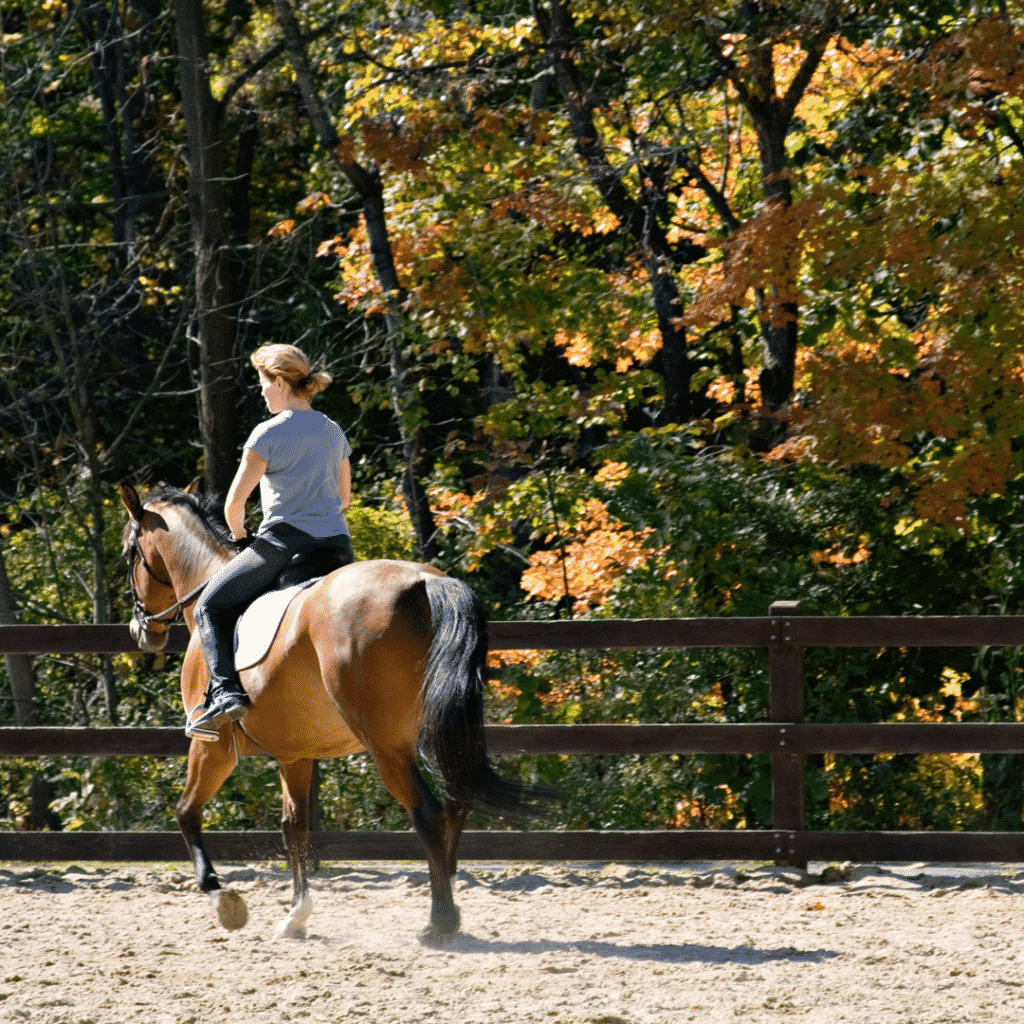
What did Candy learn there?
That if she trots super fast, I’ll just give up and then she doesn’t have to ever canter.
Not good training!
So, how do we make sure we keep our composure in the trot so we can ask for the canter in a nice, calm, clear and effective manner?
A Quick Story of My Continuing Struggles with How to Ask for the Canter
Just last week I was riding a new horse that was a bit on the stubborn side. He was testing me quite a bit when I was riding me to see if I’d back up my requests.
You should also know that his trot was was bouncy and he was very wiggly.
This was a challenge because while I asked for a canter in the corners, he would start wiggling. We would end up falling into the centre of the arena. The effort to correct his falling inwards with my inside leg and support with my outside rein would diminish how I was asking for the canter.
I would get him back to the outside of the arena but we would be in a faster, bouncier trot.
The fast, bouncy trot made it very difficult to stay organized. I would have to slow down to collect myself and then try again in the next corner.
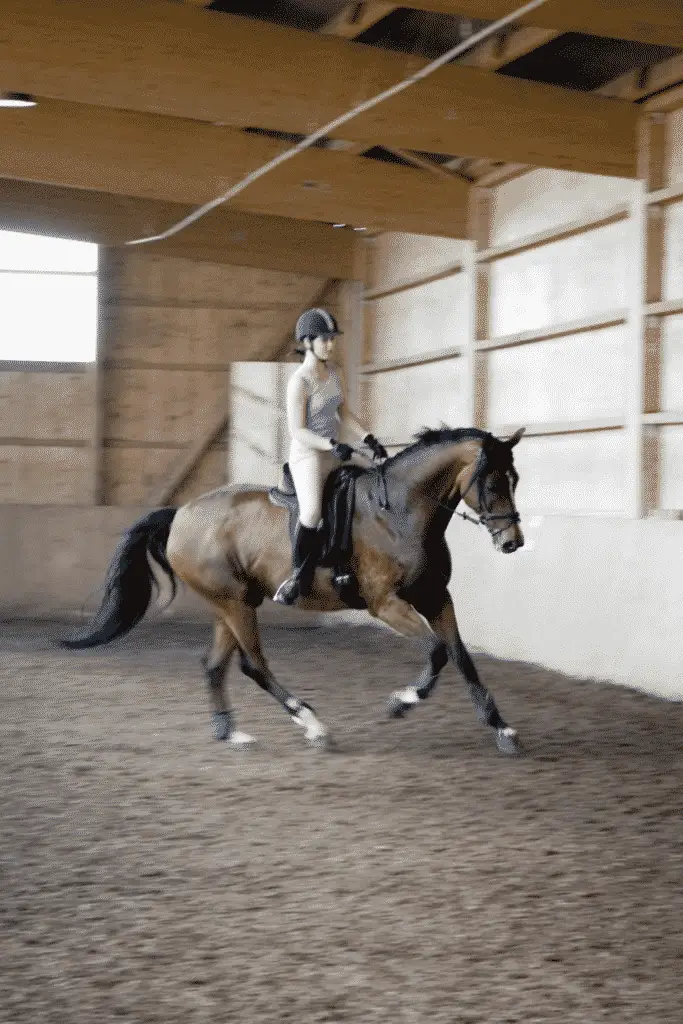
That horse soon learned that if he pushed towards the centre of the arena, he could get out of cantering by taking advantage of my disorganization. I was fighting with him rather than working with him.
I knew that I was in a loosing battle so I went back to the basics: flexion and circles.
The principles I used are:
- By trotting a small circle at a fast pace, I eliminated the possibility of him pushing inwards. I no longer had to fight with him about this.
- Now that I wasn’t fighting him, I was able to establish solid neck and body flexion. This helped both of us with balance and organization.
- I used my favourite trick to look professional while riding an increasingly faster, bouncy trot while trying to get a canter…Coming up below!
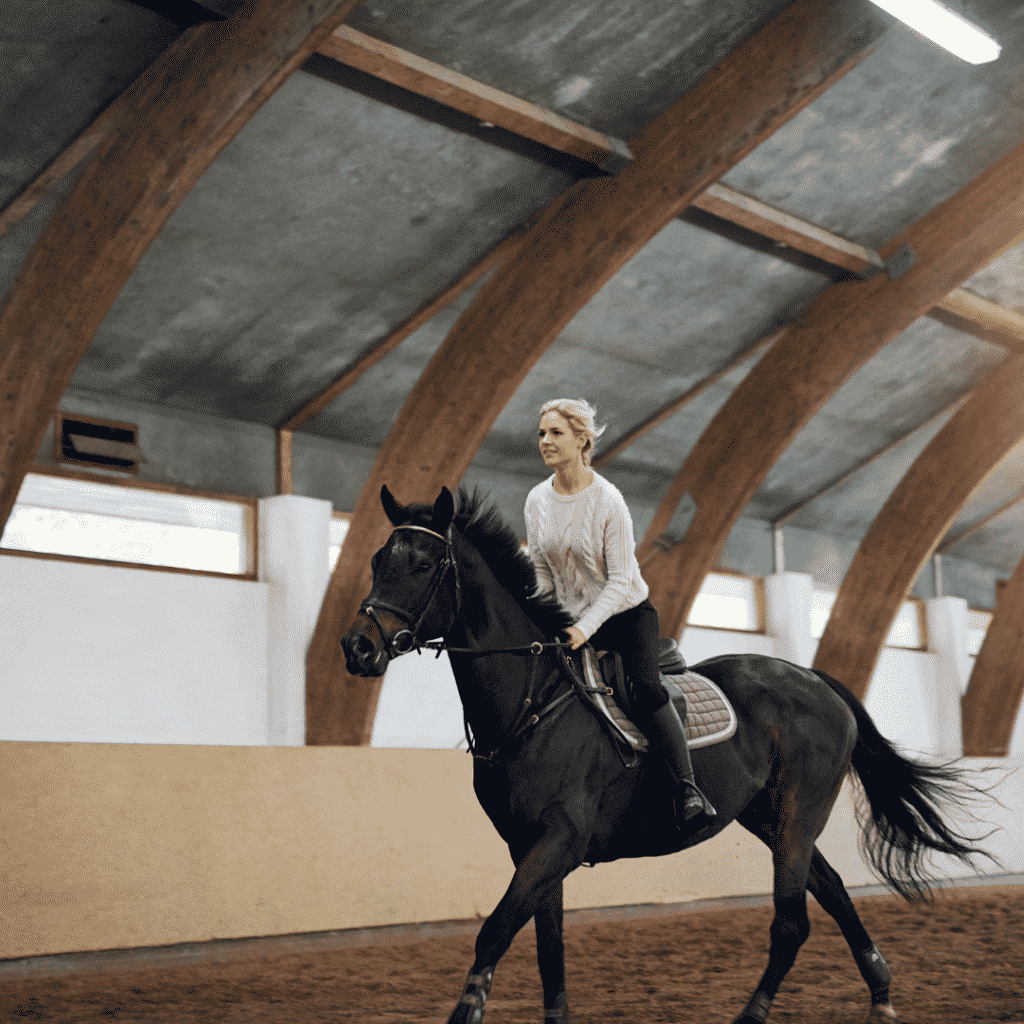
Transitioning smoothly to the canter helps me feel much more put together and balanced as a rider. This is especially important to me when I’m riding a new horse.
The one trick that I use to help me when I’m on a new horse is simple yet effective.
I find it helps me stay much more composed, in control and it helps me stay organized. It’s especially useful on horses that tend to have bouncy trots. The type of trots that get faster and more bouncy as you’re working on the canter transition.
My Trick on How to Ask for the Canter: Post, Sit, Post, Canter
Traditionally, you sit trot into a canter but you absolutely do not need to.
You can actually post right up until the point that you canter.
Posting before the canter is beneficial for two reasons:
- You don’t lose your balance and get all disorganized trying to sit a super fast trot and squeeze your core 100 times a minute.
- You learn to time your cues more precisely so that your horse picks up the canter right as you’re asking for it.
First, you’ll pick up the trot and speed it up. Trot as fast as you can, continuously trying to speed up the trot by pumping your seat. As you approach a corner, you’ll start moving your aids into position; specifically you’ll bring your outside leg back behind the girth.

At this stage, you’ll notice cues from your horse that they’re ready. He’ll flick his tail or his ears. He might even break into a canter before you ask.
Make sure that you’re going into the corner fast so that your horse is already thinking about up-transitioning.
As you turn the corner, you will: sit, post, sit and squeeze right into a canter stride.
If you don’t get the canter immediately, I would recommend backing your command up with a crop. This way he knows that even though this is a different method to cantering than usual, he still has to canter.
If you do this the first time, you’ll notice that the next time you ask for a canter in this way, he’ll be much more likely to respond as soon as you sit and squeeze.
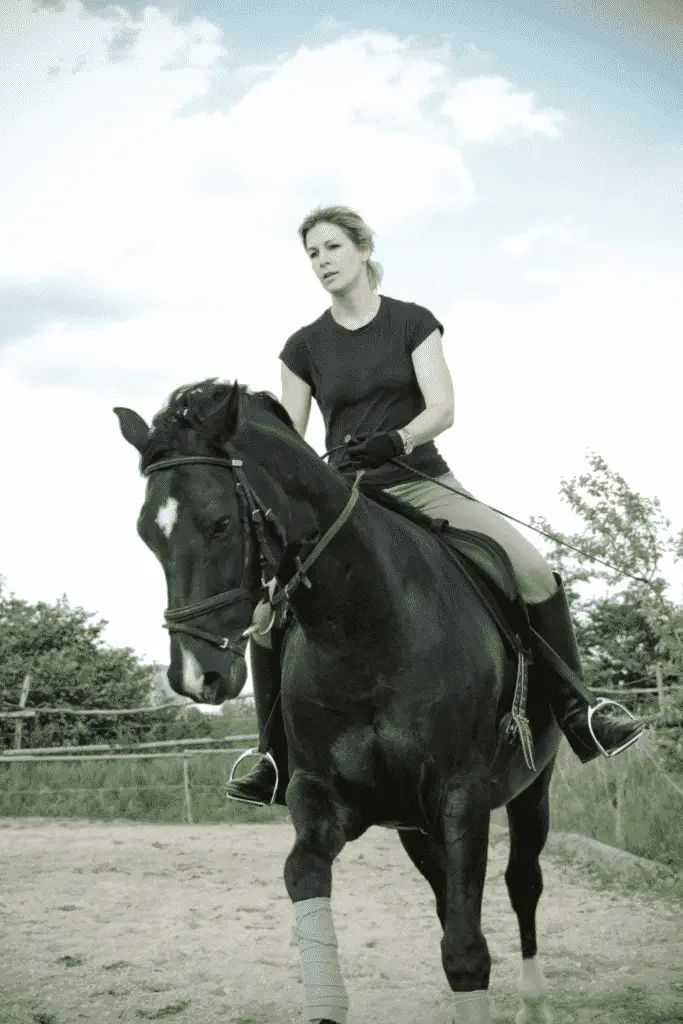
Back to My Quick Story
Going back to my story from above, the same principles apply when using the sit, trot, sit, canter method. Even though you’re on a small circle here and you’re not going into the corner, you’ll do everything the same.
The only thing that changes is that you need to mentally decide at what point you’re going to canter.
I brought the horse up to a very quick trot last week on the circle. He was showing me signs that he knew the canter was coming like raising his head slightly, flicking his ears and swishing his tail. At that point I would decide in my head that I would sit, post, sit, canter.
It was important that I knew when the transition was going to be because I wanted to clearly communicate with him. I wanted him to know that I was asking and that he needed to canter when I asked (rather than just when he felt like it).
I gave myself the advantage, however, by pushing him to the speed where I knew he was thinking about the canter before I asked.
After a few successful transitions this way, we’ll get used to each other. Then I can use the same cues at a slower trot and on the outside of the arena with a much higher chance of success.
If you enjoyed this post, you might enjoy my FREE Beginner Rider’s EBook! You’ll learn how to keep a consistent pace (whether you’re riding a fast or slow horse), how to make smoothen transitions, how to finally get the flexion and bend you want, The Emergency Brake as well as bonus chapters on making cantering and jumping so much easier!
Sign-up below and I’ll send you access for free:
Let me know in the comments if this has been helpful and/or if you’re having any specific issues that you’d like to address!
Did you enjoy the read? Pin it!
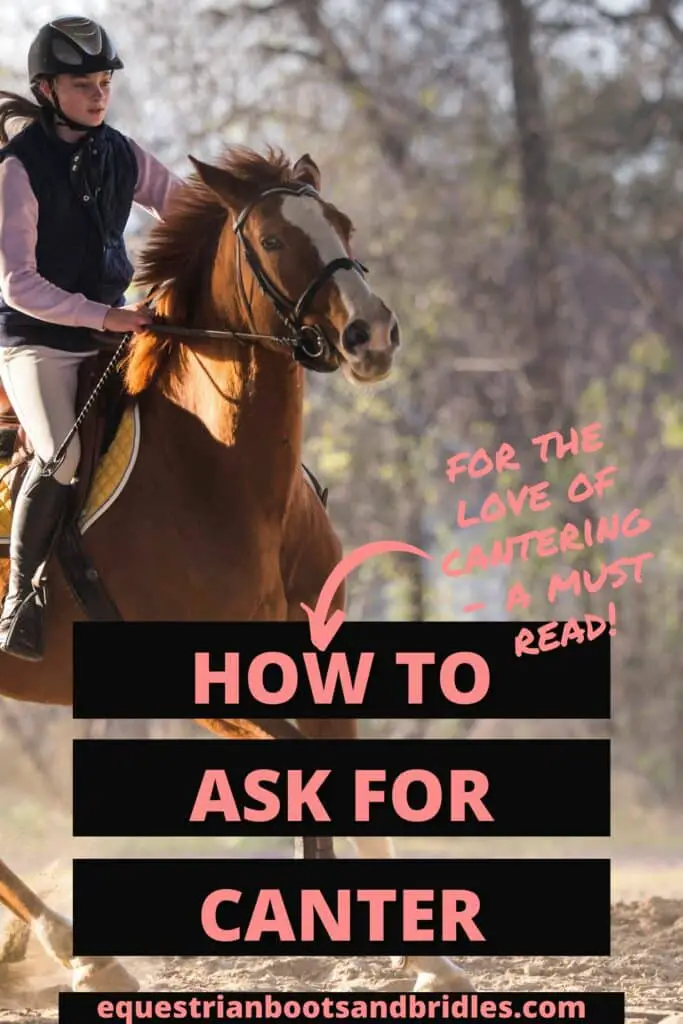

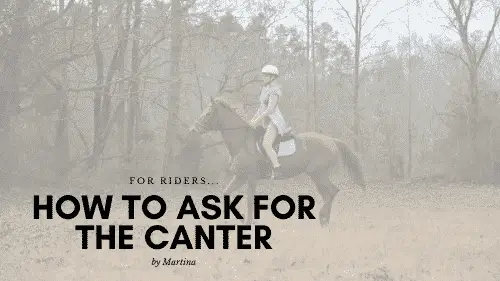
Thank you